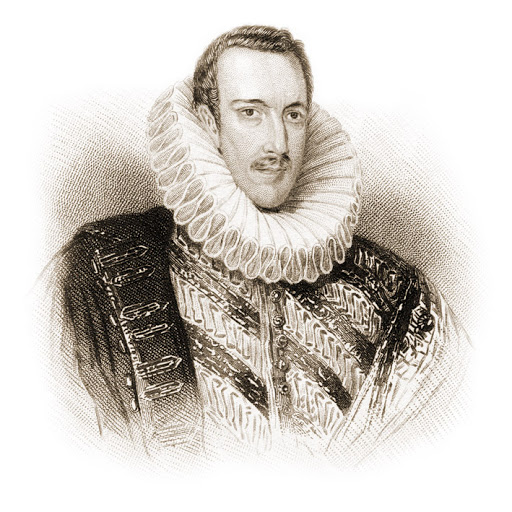
St. Philip Howard was a husband and father, a Catholic convert during the English Protestant persecution of the faithful, and a martyr for the Faith. Philip was born in 1557 in London to Thomas Howard, the Duke of Norfolk, and his wife Lady Mary Fitzalan.
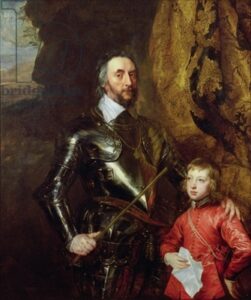
A PRIVILEGED CHILDHOOD
His maternal grandfather was the Earl of Arundel. In the British system of nobility, an earl was a medium ranking, lower than a prince, higher than a knight. Philip’s father, Thomas, had complied with the forced apostasy of England to the Church of England brought about by King Henry VIII. At age twelve, Philip entered into an arranged marriage with Catholic convert Anne, the heiress daughter of Lord Dacre of Gillesland. In 1572, when Philip was fifteen, his father Thomas was executed by Queen Elizabeth I for treason, causing Philip to be placed as a ward in the care of the Queen. He attended St. John’s College at Cambridge and graduated at age eighteen. He then went to the Queen’s court, where he dedicated himself to gaining favor with her. He generally wasted his time with the frivolities of royal life, forsaking his wife, whose Catholicism worked against his ambitions. When his maternal grandfather died, he inherited his title, Earl of Arundel, in 1580.
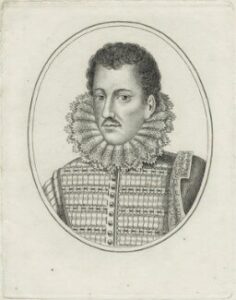
A DANGEROUS CONVERSION
A London event in 1581 proved to be life altering for Philip. A debate took place: on one side was a group of Protestant scholars and theologians. On the other was [St.] Father Edmund Campion, a Jesuit priest, physically weak from torture on the notoriously grisly rack, but still mentally sharp; and another English priest, [St.] Father Ralph Sherwin. With no opportunity to prepare, they defended the Faith quite persuasively, which greatly impressed young Philip. Sadly, both Campion and Sherwin were martyred by the British throne before the end of 1581. Philip, after hearing the debate, was a changed man, and he reformed his life. Not only did he reconcile with his wife, Ann, he became quite dedicated to her. In 1584, he was received into the Catholic Church, and became devoted to the practice of the Faith, although it was necessary for him to keep this quiet. Philip and Ann were suspected of sheltering persecuted Jesuit priests in their home. The change in Philip was noted by the Queen, and he sensed that he was in danger.
ESCAPE AND ARREST
In 1585 he made a plan to escape from his London home to Flanders (modern-day Belgium) with his family and his brother. He sent a long letter of explanation to the Queen and the group set out from Littlehampton on the south coast of England. Before they could reach their destination, he was arrested at sea and returned to London.
Philip was convicted of treason for being a Roman Catholic and for leaving England without permission. He was fined £10,000 and imprisoned in the Tower of London in April of 1585. Three years later, he was accused again of treason, because he allegedly prayed in prison for the success of the Spanish Armada. This mid-1588 Spanish naval effort to remove Queen Elizabeth from the British throne and re-establish Catholicism was unsuccessful. Interestingly, King Philip II of Spain was Philip Howard’s godfather at his infant Baptism as well as his namesake. Philip was tried in April of 1589, and as was usually the case at the time with accused Catholics, the extremely biased outcome was a sentence of execution. The execution required the Queen’s signature, and she never signed it. Since Philip did not know this, he was left in prison thinking that his death was imminent. Instead, he was left to die in prison after having been placed there at age twenty-eight. He was allowed study and devotional books, and spent his time in prayer, study, and penance. He prayed ardently to be able to see his wife and children again; the youngest, his only son, was born after his incarceration.
A UNIQUE FRIENDSHIP
One of the priests who had been sheltered by the Howards was [St.] Robert Southwell, who was also being held in the Tower. Philip’s pet dog served as a go-between for the men, who supported and encouraged each other with messages. By the autumn of 1595, he was dying and made one last plea to the Queen to be able to see his wife and children. Her reply was that if he would just attend one Protestant service, he would see his family and regain the Queen’s favor. He refused, and died alone on October 19, 1595 at age thirty-eight. He is believed to have contracted dysentery, but some suspected that he was poisoned. He was buried in the Tower church with his father and grandfather. Ann, who continued to protect and provide for renegade priests, obtained permission in 1624 to transfer his remains to Arundel Castle.
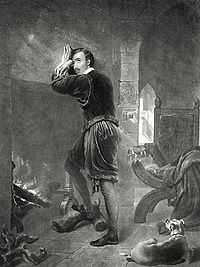
We can deduce much from the inscription that St. Philip Howard left on the wall of his prison cell, “The more affliction we endure for Christ in this world, the more glory we shall obtain with Christ in the next.” He refused to compromise the Faith, letting go of his desires as a young husband and father, rather than to validate the perfidy, indifferentism, and robbery practiced by his countrymen and his queen.”
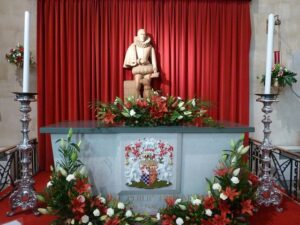
St. Philip was canonized in 1970 by Pope Paul VI as one of the Forty Martyrs of England and Wales, and his remains now rest in Arundel Cathedral. His feast day is October 19.
